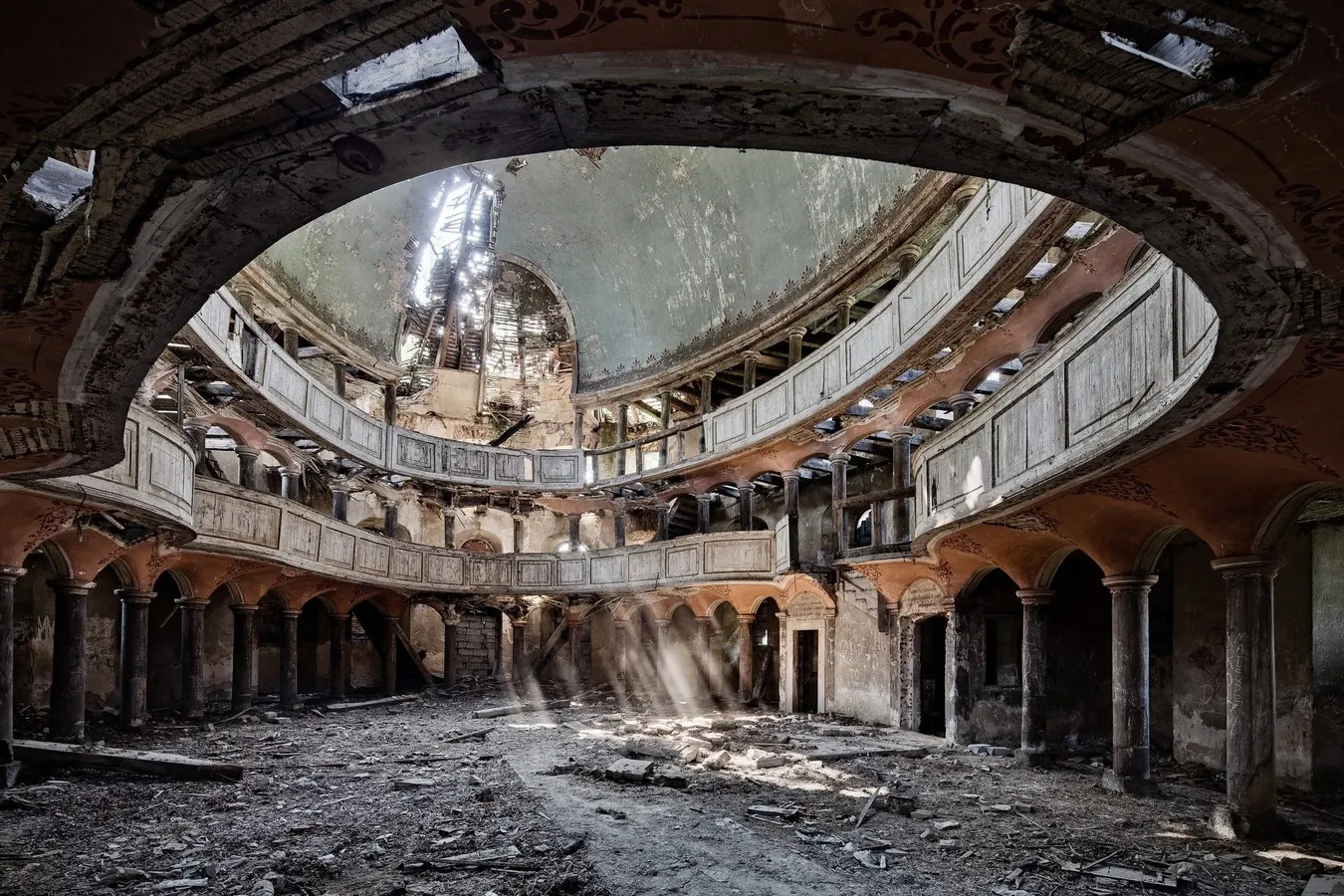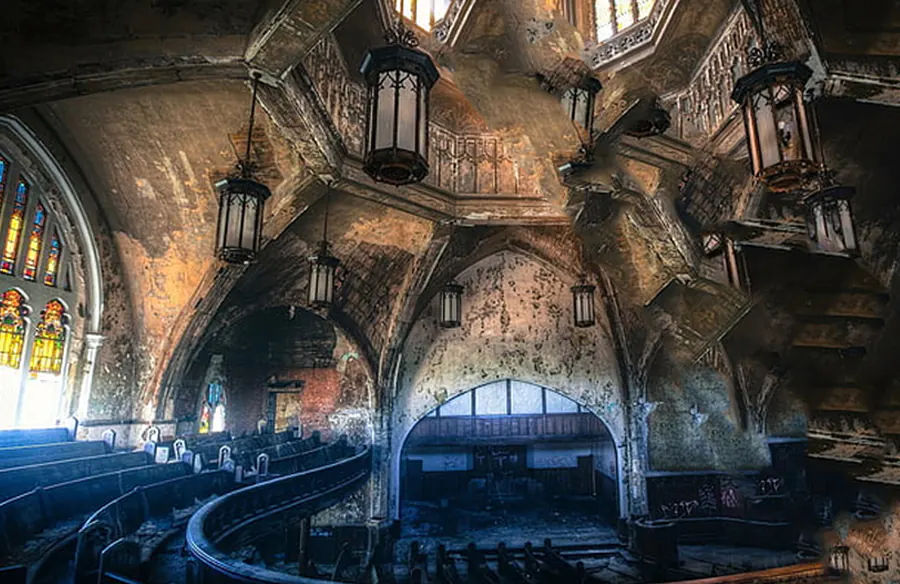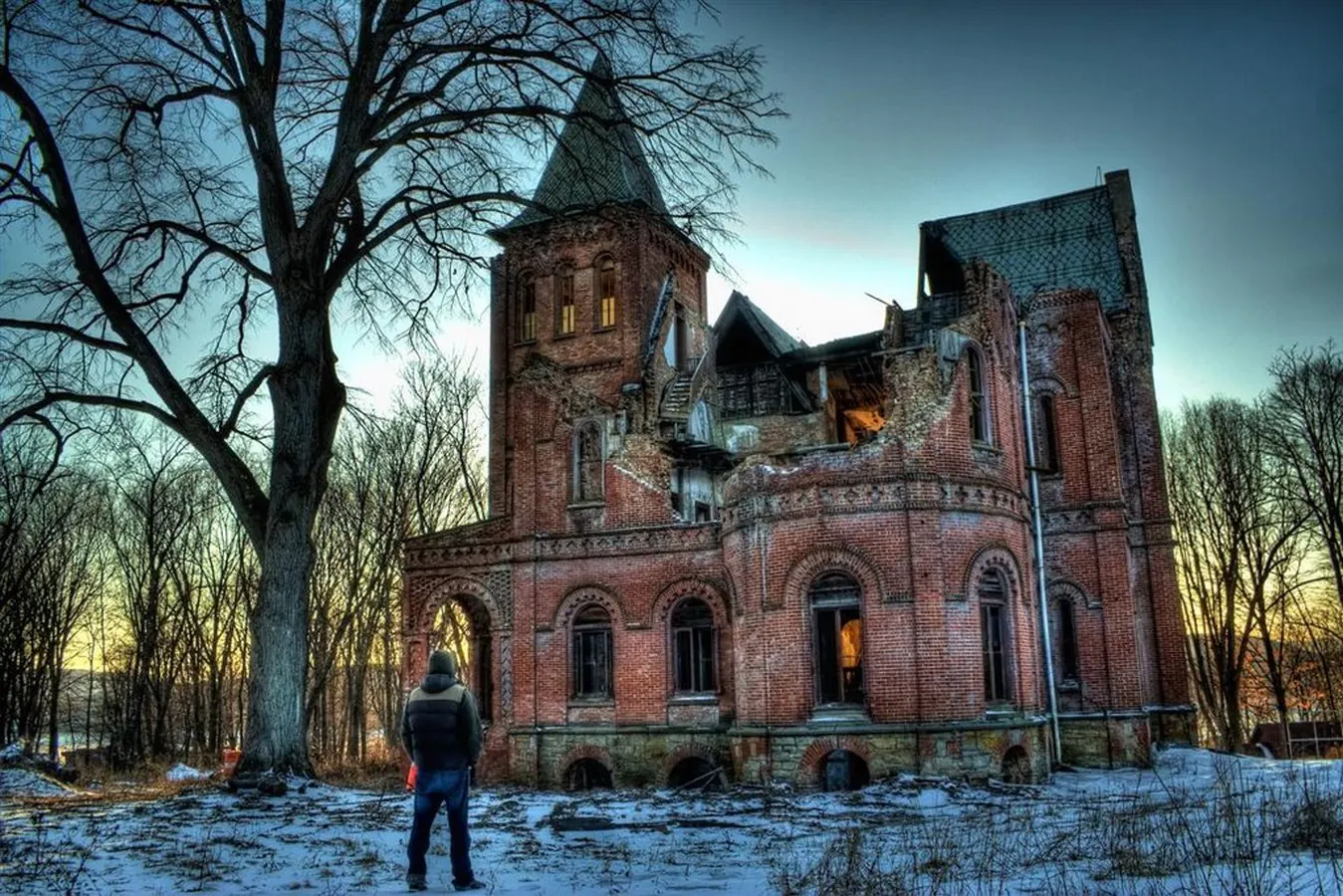Abandoned houses represent a captivating intersection of history, architecture, and the human experience. These structures, often grand in design, serve as poignant reminders of times gone by. The reasons for their abandonment can be multifaceted, encompassing historic, economic, and personal factors that contribute to their deserted state.
Historically, many abandoned houses were once vibrant centers of activity, housing families and serving as landmarks within their communities. Over time, societal changes such as urban development, shifts in population, and changing economic conditions have led to these grand properties falling into neglect. For instance, the decline of once-thriving industries can precipitate economic downturns, leaving families unable to maintain their homes and forcing them to vacate. Additionally, historical events, such as wars and natural disasters, can directly lead to the abandonment of properties, causing them to be left behind as communities rebuild.

Personal factors also contribute to the abandonment of houses. Families may face financial hardships that result in foreclosure, or they may relocate due to job opportunities, leaving their former homes empty. In some cases, the death of homeowners can lead to properties being neglected, especially if no heirs are willing or able to maintain them. The combination of these elements creates a tapestry of stories woven into the fabric of abandoned residences.
Despite their dilapidated state, large abandoned houses often hold significant cultural and architectural value. They can showcase intricate designs and craftsmanship from bygone eras, reflecting the style and aspirations of their original owners. As we delve deeper into the ten largest abandoned houses in the world, it becomes crucial to acknowledge the context in which they exist. Each property is not just a shell of its former self but a testimony to human endeavors, community shifts, and the passage of time.

Top 10 Largest Abandoned Houses Around the Globe
Abandoned houses often evoke curiosity, with their grandeur juxtaposed against decay. This guide explores the ten largest abandoned homes worldwide, showcasing their locations, architectural styles, and intriguing histories.
1. **Hôtel de Ville, France** – Located in the heart of Paris, this former mayoral mansion spans an impressive 11,000 square meters. Built in the late 19th century, its ornate Renaissance design housed many significant events but was left to deteriorate after political turmoil.
2. **The Ruins of Kress Building, USA** – Situated in the vibrant city of New Orleans, this building once served as a retail giant. With over 40,000 square feet, its distinctive Art Deco style stands in stark contrast to the surrounding decay. The site was abandoned following severe storm damage and economic shifts.
3. **The Abandoned Steel Mansion, India** – This expansive Victorian structure covers over 30,000 square feet in Dhantola. Known for its intricate woodwork and towering spires, it was inhabited by a sprawling family until an unexpected tragedy led to its abandonment.
4. **Villa de Vecchi, Italy** – Nestled near Lake Como, this 19th-century villa stretches across 14,000 square feet and is renowned for its Gothic Revival style. Legend has it that mysterious events plagued the original owner’s family, which ultimately drove them away, leaving the estate to languish.
5. **The Balti House, Russia** – Located in the depths of Siberia, this abandoned mansion occupies a staggering 22,000 square feet. Built in the early 1900s, its eclectic design reflects the disparate architectural influences of its time. It was vacated during the collapse of the Soviet Union.
6. **The Montpelier Mansion, USA** – This 18th-century estate in Maryland covers 10,500 square feet. Once the home of a wealthy landowner, it was abandoned after a series of unfortunate events, leading to years of neglect.
7. **The Hermit House, Japan** – Measuring 15,000 square feet, this house in the mountains was once a peaceful retreat for artists. However, following a series of natural disasters, it became deserted, adding to its enigmatic aura amidst the landscape.
8. **Château de Noisy, Belgium** – With a sprawling area of 25,000 square feet, this neo-Gothic castle is a striking sight in the Ardennes. Abandoned in the 1990s, it is surrounded by tales of ghost sightings and lost treasures.
9. **Pyrénées Palace, Spain** – This lavish estate once served as a royal retreat, spanning 12,000 square feet. Its remarkable Baroque architecture now stands empty, evoking stories of royal escapes and the impact of the Spanish Civil War.
10. **Fountain Blue House, USA** – Located in Florida, this 18,000 square foot mansion exhibits a Mediterranean style. Abandoned due to financial reasons, it is now a canvas for graffiti artists, transforming it into an unexpected attraction.
The stories behind these massive structures are as varied as their architectural styles, creating a rich tapestry of history that invites exploration. Photographs and visual elements can immerse readers in their grandeur and mystery, emphasizing the blend of beauty and neglect that defines each residence.
The Characteristics of Large Abandoned Homes
Large abandoned homes possess distinctive features that reflect their architectural heritage and historical significance. These properties often exhibit grand designs that showcase the prevailing architectural styles of their time. Common styles include Victorian, Gothic, Colonial, and Art Deco, each marked by unique embellishments and structural elements that speak to their cultural and regional contexts. The intricate woodwork, towering ceilings, extensive moldings, and elaborate facades are testaments to the craftsmanship and attention to detail sought by their original owners.
The historical context surrounding these properties often reveals a story of wealth, prestige, or significance in the community. Many large abandoned homes were built during periods of economic prosperity, serving as family estates, mansions for affluent individuals, or even institutions like hospitals or schools. As such, they frequently occupy vast parcels of land, complete with sprawling gardens, outbuildings, and various amenities that were, at one time, well-maintained. The sheer size of these estates can range from several thousand to over 20,000 square feet, indicating a stature that once demanded respect and admiration.
Alongside architectural styles, the design and former functions of these abandoned houses contribute to their charm and mystique. Some homes may feature vast ballrooms, libraries, or even indoor swimming pools, illustrating the luxurious lifestyle that the inhabitants once enjoyed. However, neglect and the passage of time have resulted in various degrees of deterioration. Roofs may sag, windows may shatter, and once lush gardens may be overtaken by weeds, making the homes eerily beautiful in their decay. Understanding these characteristics not only fosters an appreciation of the grandeur that was but also highlights the impact of time on what were once thriving symbols of prosperity.
The Future of Abandoned Mansions
Abandoned mansions, often seen as silent echoes of a past era, hold a complex future that intertwines themes of preservation, ruin, redevelopment, and urban exploration. These structures, once grand and full of life, now stand in various states of decay, inviting diverse interpretations and future possibilities. The future of these remarkable buildings is shaped not only by their architectural significance but also by socio-economic contexts and community values.
One of the foremost futures for many abandoned mansions lies in preservation and restoration efforts. Historical societies and architectural enthusiasts advocate for repairing and maintaining these properties, aiming to secure their history for future generations. This approach acknowledges the cultural heritage inherent in these buildings, transforming them from neglected ruins into vibrant sites of historical interest. On the other hand, the preservation of such mansions is often met with challenges, including funding and maintenance. In some cases, it becomes clear that not all structures can or should be saved; thus, decision-makers must weigh the costs against the potential benefits.
Redevelopment is another avenue explored for these expansive properties. Abandoned mansions may be transformed into luxury apartments, boutique hotels, or community centers, serving contemporary needs while respecting their historical roots. This trend, while practical, raises essential questions about authenticity and the essence of the original architecture. The delicate balance between modernization and preservation can often lead to public debates surrounding these properties.
Urban exploration, a growing trend among adventurous individuals, also seeks to reveal the stories encapsulated within these abandoned mansions. Explorers advocate for documenting these sites, showcasing their beauty and history, but their activities may sometimes lead to further neglect or vandalism. As society engages with these relics, the narratives surrounding them evolve, reflecting changing perceptions regarding architecture and history.
Ultimately, the future of abandoned mansions encompasses a diversity of perspectives, reflecting society’s complicated relationship with its shared history. These structures remain crucial to discussions about architectural integrity, community identity, and the preservation of cultural memories.
